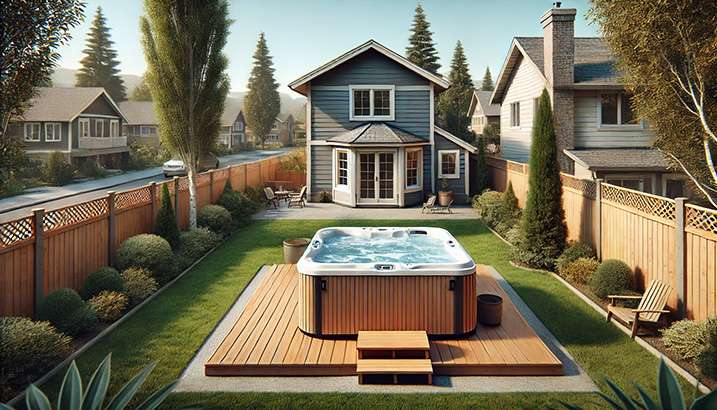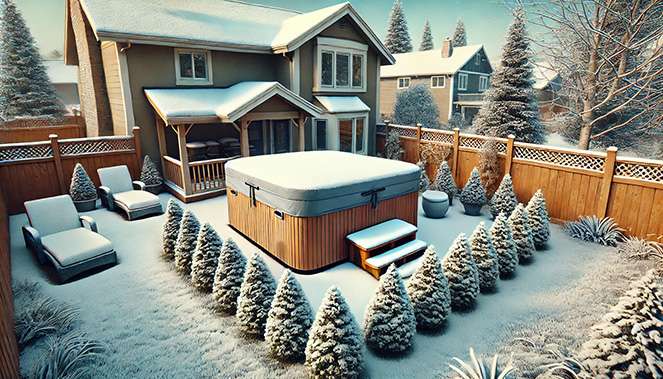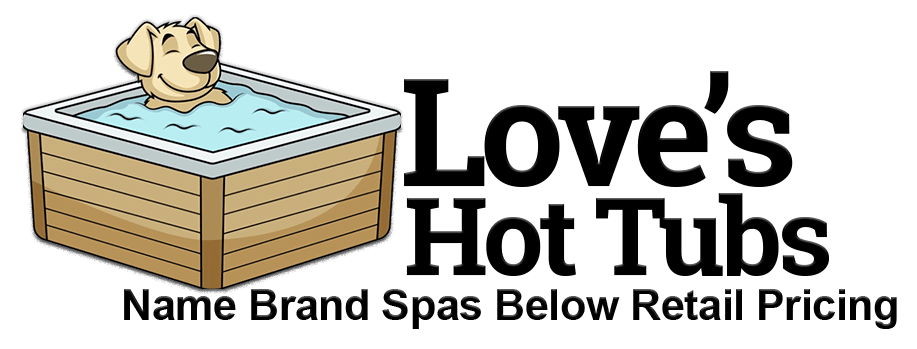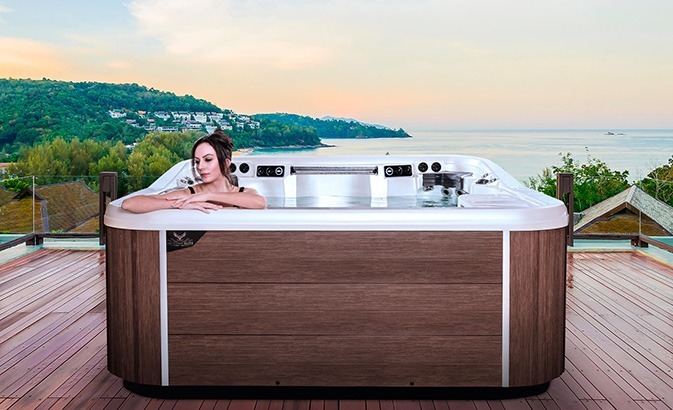A hot tub is more than just a way to relax—it’s a long-term investment that provides comfort, luxury, and health benefits. Regular maintenance is essential to get the most out of your hot tub and ensure it stays in top-notch shape. Not only will this extend the lifespan of your spa, but it will also ensure that it’s safe and hygienic for every soak. In this guide, we’ll walk you through everything you need to know to maintain your hot tub.
1. Keep Your Water Clean and Balanced
Maintaining clean water is vital for a safe and enjoyable hot tub experience. Here’s how to do it:
Test Water Regularly:
Aim to test your hot tub water at least once a week. Use test strips or a water test kit to check the pH, alkalinity, and sanitizer levels. This will help you maintain proper water balance and ensure the water is clean and safe for soaking.
Use a Sanitizer Dispenser:
A floating sanitizer dispenser is a convenient tool for ensuring that your sanitizer is evenly distributed in the water and maintains safe levels at all times.

Shock the Water:
Regular shocking—adding an oxidizer to the water—eliminates organic contaminants that sanitizers can't handle. This helps restore water clarity and keeps the water fresh.
Keep It Covered:
When your hot tub isn't in use, cover it to prevent debris from getting in, conserve heat, and save energy.
Adjust pH and Sanitizer Levels:
Keep the pH levels between 7.2 and 7.8, and adjust as necessary based on your test results. Proper sanitizer levels (chlorine or bromine) help eliminate bacteria and maintain water clarity.
Clean the Filter Regularly:
The filter removes dirt, debris, and impurities from your water. Rinse your filter weekly with a garden hose and use a filter cleaner for deeper cleaning. Depending on usage, replace it every 6-12 months.
2. Drain and Refill Regularly
Over time, oils, bacteria, and contaminants can build up in your hot tub water, making it necessary to drain and refill your spa every 3-4 months or more frequently with heavy use. Here’s how to do it:
1. Turn Off the Power:
Always turn off the power at the circuit breaker before draining your hot tub to avoid any electrical mishaps.
2. Drain the Water:
Use the hot tub's drain valve or a pump to remove the water. Depending on your hot tub's size, this may take a few hours.
3. Clean the Surfaces:
While the hot tub is empty, thoroughly clean the interior with a non-abrasive cleaner and a soft cloth. Focus on removing any visible buildup or stains.
4. Refill the Tub:
While the hot tub is empty, thoroughly clean the interior with a non-abrasive cleaner and a soft cloth. Focus on removing any visible buildup or stains.
5. Prime the Pump:
After refilling, make sure to prime the pump to eliminate any airlocks. If water isn’t circulating properly, open the air valve or run the jets on low to get water flowing smoothly throughout the system.
6. Balance the Chemistry:
After ensuring proper water circulation, test and adjust the water's pH, alkalinity, and sanitizer levels to ensure it's balanced before you use the hot tub again.
3. Clean the Surfaces of the Hot Tub
Regular surface cleaning is necessary to keep your hot tub looking its best and to prevent damage over time. Here’s what to do:
1. Choose the Right Cleaner:
Always use a cleaner designed specifically for hot tubs to avoid damaging the surface.
2. Focus on the Waterline:
Oils and dirt accumulate most at the waterline, so give it extra attention during your cleaning routine.
3. Rinse Thoroughly:
After cleaning, be sure to rinse the surface well to remove any cleaner residue that could affect water chemistry.
4. Inspect for Damage:
While cleaning, check the hot tub's surface for any cracks, scratches, or signs of wear. Address any minor issues early to prevent further damage that could affect the tub’s performance or lead to costly repairs.
4. Check the Equipment Regularly
Monthly equipment checks can help prevent unexpected issues and ensure your hot tub is functioning efficiently:
Inspect the Pump:
The pump circulates water, so ensure it's operating smoothly without unusual noises or vibrations.
Check the Jets:
Test each jet to ensure it's working properly and has no blockages or leaks.
Check the Heater:
Verify that your heater is keeping the water at the desired temperature and inspect for leaks around the unit.
Call a Professional for Repairs:
If you notice any problems with your pump, heater, or jets, it's best to call a professional for service before the issue worsens.
5. Cover Your Hot Tub
Covering your hot tub when it’s not in use is one of the simplest ways to keep it clean and efficient. Here’s why it matters:
Protect from the Elements:
A high-quality cover protects your hot tub from weather elements like rain, snow, and sun, which can damage its surfaces and components over time.
Save Energy:
A cover helps retain heat, reducing energy costs by minimizing the electricity needed to keep your water warm.
Prevent Debris:
Covers keep out leaves, dirt, and bugs, reducing the strain on your filtration system and making maintenance easier.
Improve Safety:
If you have children or pets, a cover adds an extra layer of safety by preventing accidental falls into the hot tub.
When purchasing a cover, choose one that fits your hot tub snugly, is durable, and is easy to remove and replace.
6. Maintain Proper Water Circulation
Good water circulation is key to keeping your hot tub water clean and preventing algae or bacterial growth. Here’s how to ensure your water circulates properly:
Run the Pump Regularly:
Most hot tubs come with circulation cycles. Ensure your pump runs for at least 20 minutes, 2-4 times per day, to keep the water moving and filter impurities.
Use a Timer:
Many hot tubs have a built-in timer that automatically cycles the pump. If your hot tub doesn't have this feature, manually turn on the pump or install an external timer to maintain consistent circulation.
7. Check the Hot Tub Cover Condition
The hot tub cover is a crucial component in maintaining water temperature and keeping your tub clean, but it requires some care as well:
Inspect for Damage:
Check the cover for any signs of wear and tear, such as rips, cracks, or a waterlogged core. If the cover is damaged, it's less effective at insulating and may need to be replaced..
Clean the Cover:
Wipe down the cover regularly with a mild soap and water solution to remove dirt, mildew, and debris. A vinyl protector can be used to maintain the cover's condition and prevent UV damage.
8. Winterize Your Hot Tub (If Necessary)
If you live in a colder climate and plan to shut down your hot tub during the winter, proper winterization is key:
1. Drain the tub Completely:
Drain all the water from the tub, pipes, and equipment to prevent freezing, which can cause damage.
2. Blow Out Water from Jets:
Use a shop vac to blow out any remaining water from the jets and lines to ensure they are dry.
3. Remove and Store the Cover:
If you won't use the cover, clean it thoroughly and store it in a dry place for the winter.

4. Clean and Store Accessories:
Remove and clean accessories like headrests and filters, then store them in a dry place to protect them from freezing.
Alternatively, if you plan to use your hot tub during the winter, make sure to increase the pump’s run time to prevent water from freezing.
9. Protect Your Hot Tub During Extreme Weather
For those in areas with extreme weather conditions, you might consider adding tips on safeguarding your hot tub from things like storms or high winds:
Secure the Cover:
During storms or high winds, use safety locks or cover straps to prevent the hot tub cover from being blown off.
Consider a Windbreak:
For areas with frequent high winds, installing a windbreak around your hot tub, such as fencing or hedges, can protect both the spa and its cover.
10. Consider Water Softness
Hard water can leave mineral deposits on the interior surfaces and in your hot tub’s plumbing. Using a water softener or adding a scale prevention product can help:
Prevent Calcium Buildup:
Calcium and other minerals can accumulate over time, causing scale on the surface and clogging your filters. Use a descaler or water softener to avoid this.
Check for Hard Water Areas:
If you live in an area with hard water, it's essential to check and address mineral buildup in your hot tub regularly.
In Conculsion
Maintaining your hot tub doesn’t have to be overwhelming. By following these essential steps—keeping the water clean, draining and refilling regularly, checking equipment, cleaning surfaces, and using a cover—you’ll enjoy a well-functioning spa for years to come. Don’t forget Love’s Hot Tubs is always available to answer questions or provide support. Plus, download our free PDF, “Hot Tub Maintenance Guide.”
Follow the link for more information:
Hot Tub Maintenance 101: Everything You Need to Know.” Swim University.

